- Pressing 'h' highlights code snippets
- Pressing 'p' toggles speaker notes
- Pressing 'f' toggles fullscreen viewing
- Pressing 'w' toggles widescreen
- Pressing 'o' toggles overview mode
- Pressing 'ESC' toggles off these goodies
Notes

Why Measure?
- Slow site results in
- Lower usage
- Less Revenue
- Poor user experience
Agenda
- Measure Performance with HTML5 Web Timing
- Google Analytics Site Speed
- How Fast is the Web?
HTML5 Web Timing API
Allows web pages to get detailed timing information about the page load.
Goals:
- Supported everywhere (all browsers, mobile and desktop)
- Consistent interface and metric definitions across browsers
- Visibility into detailed network, HTTP level and DOM timing information
HTML5 Web Timing API
The API consists of the following specifications:
- Navigation Timing
- Resource Timing
- User Timing
Navigation Timing Attributes (window.performance.timing)
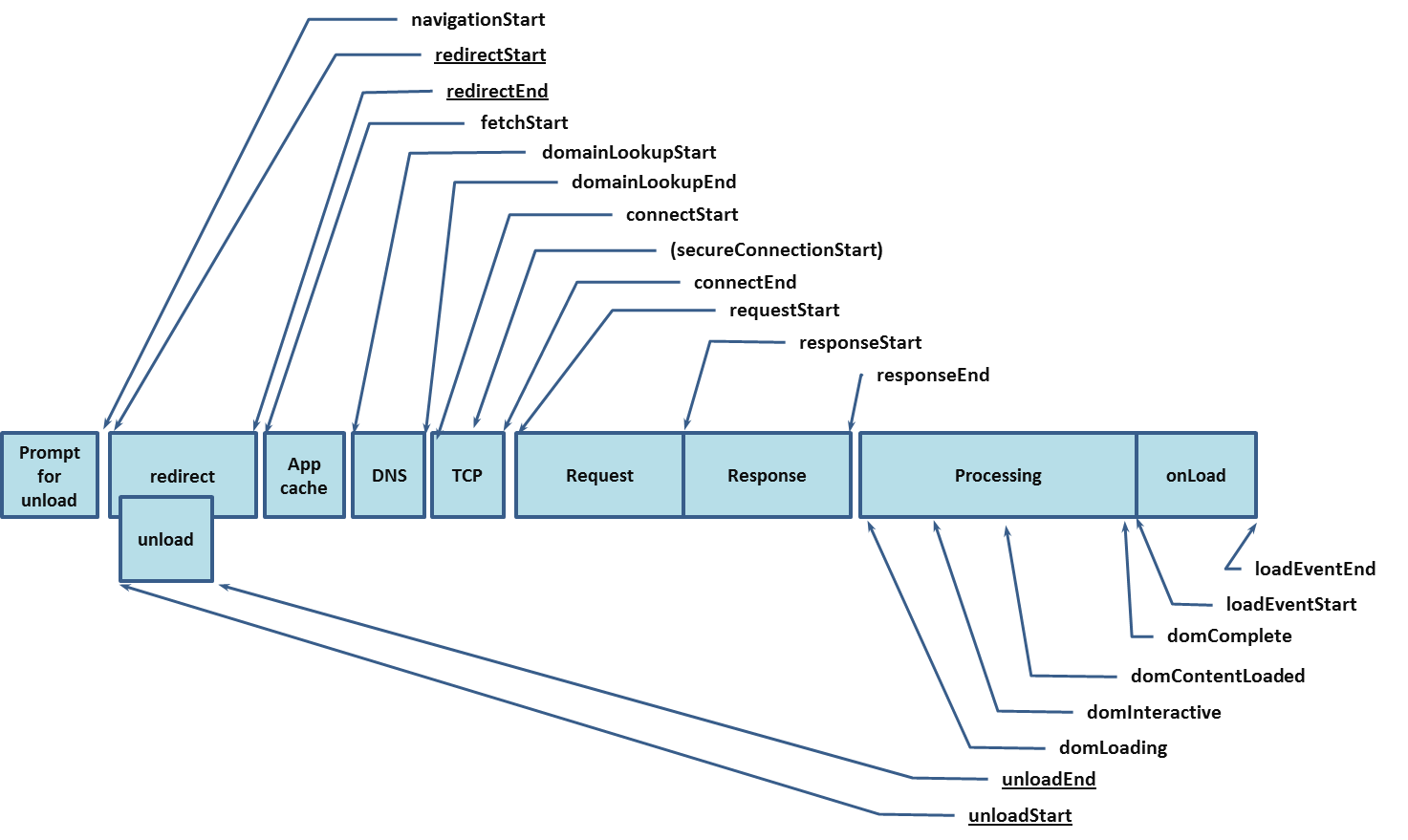
Resource Timing Attributes
interface PerformanceResourceTiming : PerformanceEntry {
readonly attribute unsigned short initiatorType;
readonly attribute double redirectStart;
readonly attribute double redirectEnd;
readonly attribute double fetchStart;
readonly attribute double domainLookupStart;
readonly attribute double domainLookupEnd;
readonly attribute double connectStart;
readonly attribute double connectEnd;
readonly attribute double secureConnectionStart;
readonly attribute double requestStart;
readonly attribute double responseStart;
readonly attribute double responseEnd;
};
Example Usage
function getImageLoadTimings()
{
var resourceList = window.performance.getEntriesByType("resource");
for (i = 0; i < resourceList.length; i++)
{
if (resourceList[i].initiatorType == "img")
{
alert("Time: " + resourceList[i].responseEnd - resourceList[i].startTime);
}
}
}
User Timing API
Provides a high precision (1 ms) timer and a standard mechanism for buffering and retrieval of timing information with a web developer supplied name.
Interfaces:
- Mark (UTC time)
- window.performance.mark(name)
- window.performance.getMarks(name)
- window.performance.clearMarks()
- Measure (duration)
- window.performance.measure(measure_name, mark_name1, opt mark_name2)
- window.performance.getMeasure(measure_name)
- window.performance.clearMeasure()
Web Timing Status
Navigation Timing is supported in the following browsers:
- Chrome 6+
- IE9+
- Firefox 7+ (mobile & desktop)
- Android 4.0+
Resource Timing and User Timing implementations expected soon.
Google Analytics
Site Speed in Google Analytics
- Analytics set up
<script type='text/javascript'> _gaq.push(['_setAccount','UA-XXXX-X']); _gaq.push(['_trackPageview']); </script> - Site Speed set up
- None, Collects speed data for 1% of traffic
- Increase sample rate for small sites
<script type='text/javascript'> _gaq.push(['_setSiteSpeedSampleRate', 50]); _gaq.push(['_trackPageview']); </script>
Page Load Process
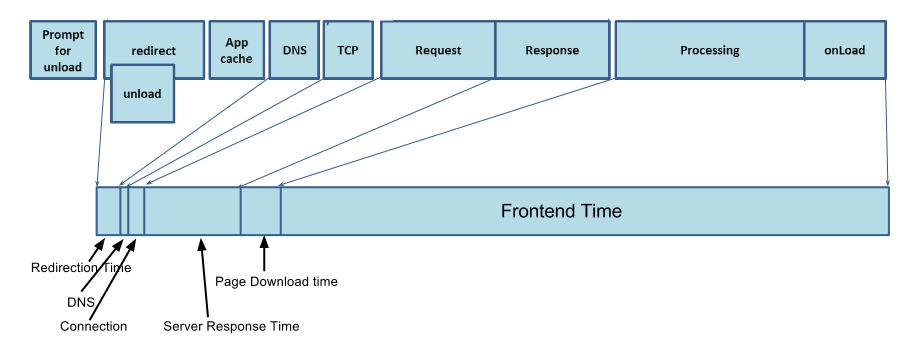
Demo
User Timings
- Measure user defined custom timings
Examples:- Timings for Ajax actions
- Define your own "User Perceived Load Time"
(Time to load main article for news publishers) - Detailed performance measurements
API
_gaq.push(['_trackTiming', category, variable, time_ms, opt_label, opt_sample]);
| Parameter | Example |
|---|---|
| category* | "Watch Page" |
| variable* | "Social widgets load time" |
| time_ms* | 2340 |
| opt_label | "logged in users" |
| opt_sample | 100 |
Example
function TimeTracker(category, variable, opt_label) {
...
}
TimeTracker.prototype.send = function() {
var timeSpent = this.endTime - this.startTime;
window._gaq.push(['_trackTiming', this.category, this.variable, timeSpent, this.label]);
return this;
}
var tt = new TimeTracker('Watch Page', 'Social widgets load time');
makeXhrRequest(url, myCallback, tt);
function makeXhrRequest(url, callback, tt) {
if (window.XMLHttpRequest) {
tt.startTime();
xhr.send();
}
}
function myCallback(event) {
if (target.readyState == 4) {
if (target.status == 200) {
target.tt.endTime();
target.tt.send();
// Do something with the resource.
}
}
}
Custom Reports, Dashboards and Data API
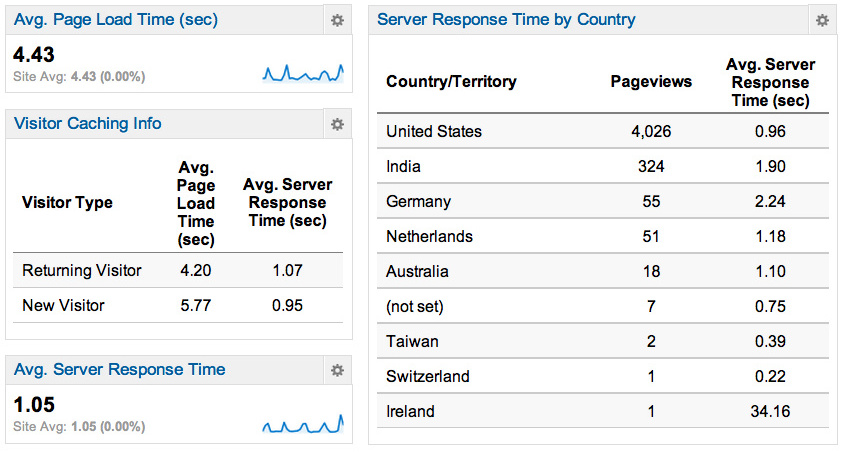
Advanced Segments
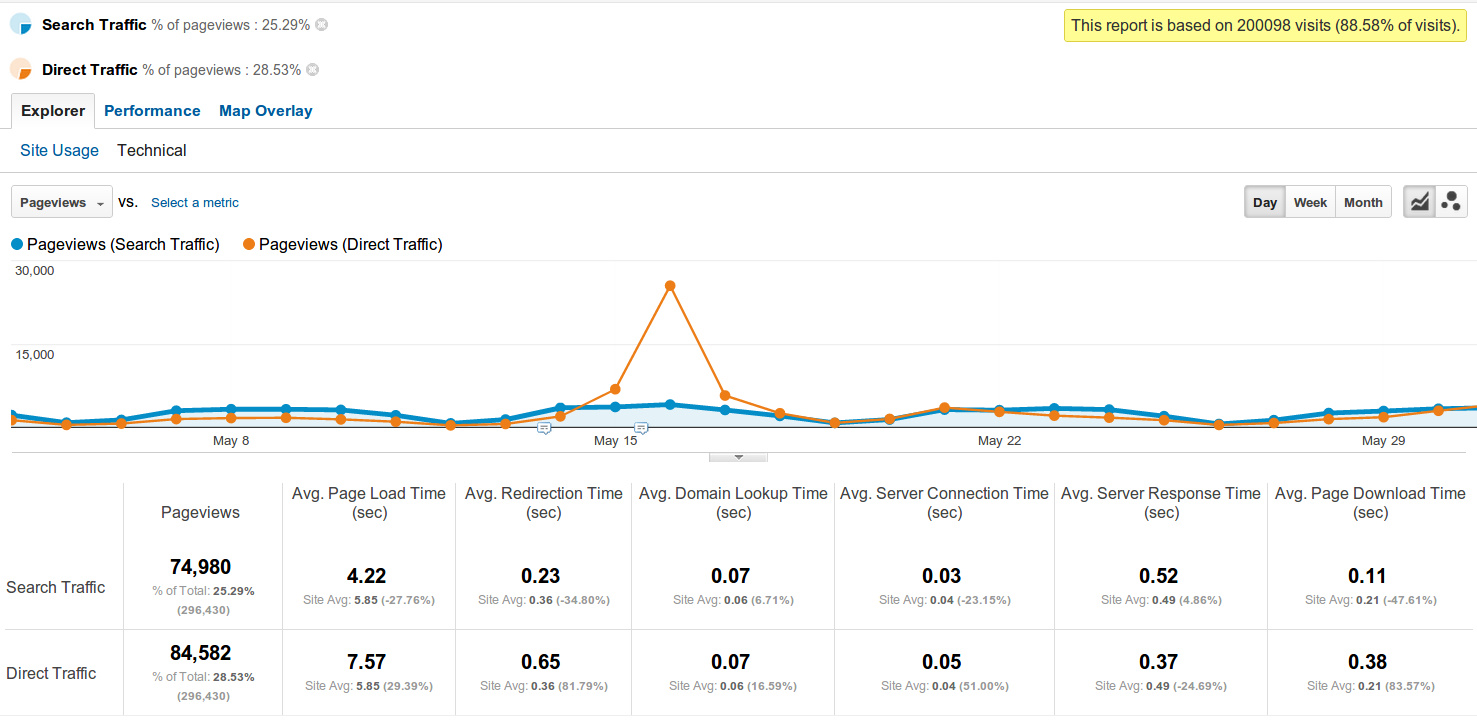
Custom Alerts
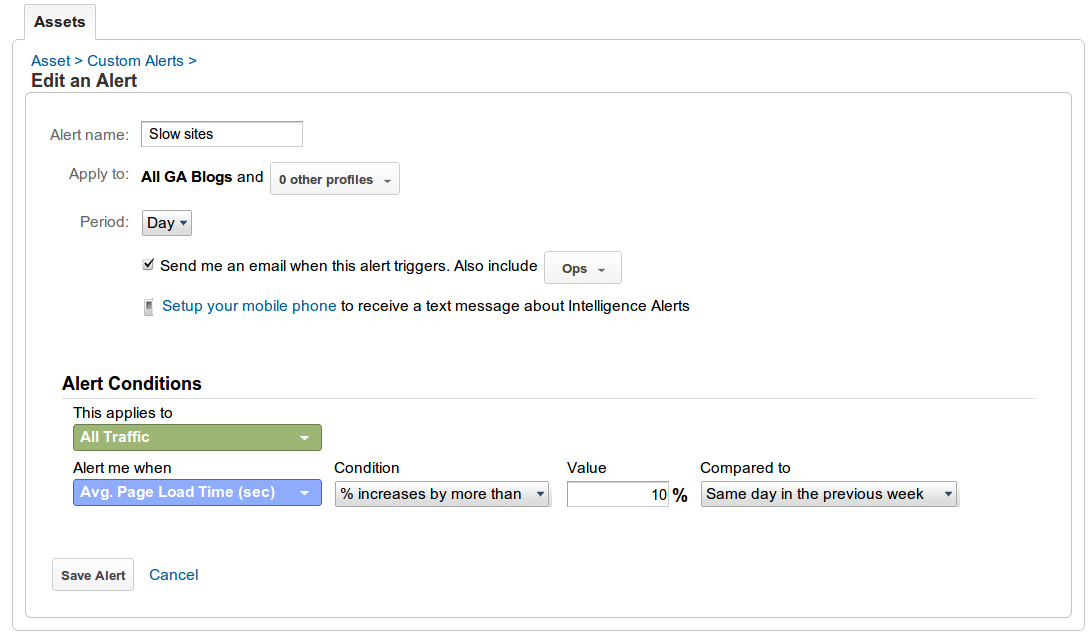
Analysis tools
-
www.webpagetest.org
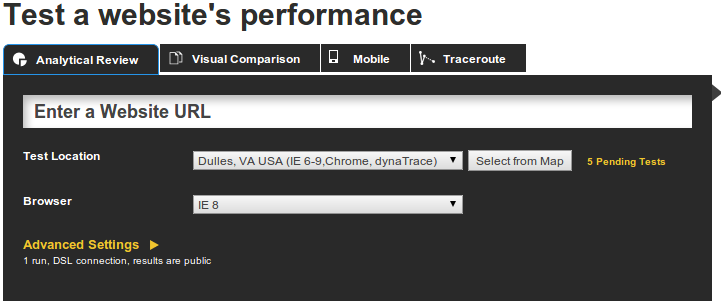
- Chrome Developer Tools[Session]
Optimization Tools
- Suggestions (Page Speed Insights)
- Automatic Rewriters
Apache module mod_pagespeed & Page Speed Service - Optimizing Your Google App Engine App [Session]
Google Analytics Site Speed Global Page Load Time: Mean, Median, Histogram
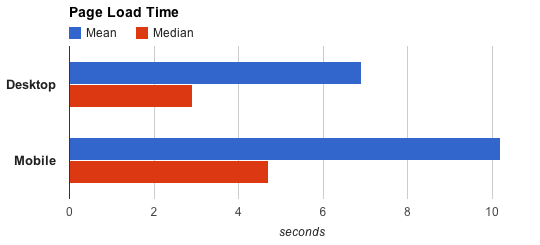
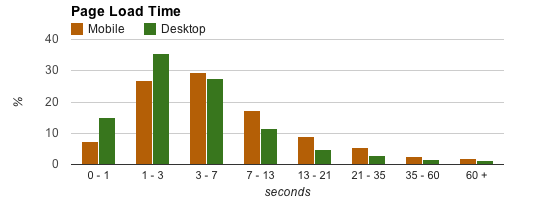
- Desktop page load time mean and median are 6.9/2.9 seconds
- Mobile mean and median are 10.2/4.7 seconds
Google Analytics Site Speed Global Page Load Time: Countries
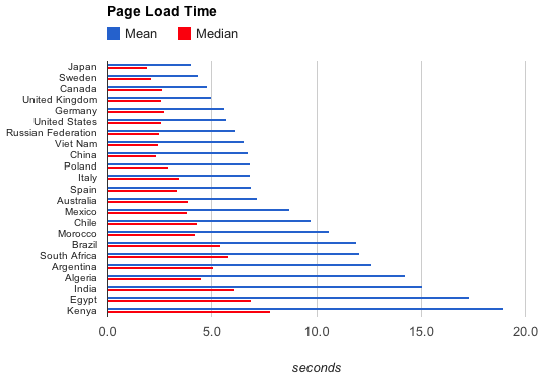
Google Analytics Site Speed Global Page Load Time: Verticals
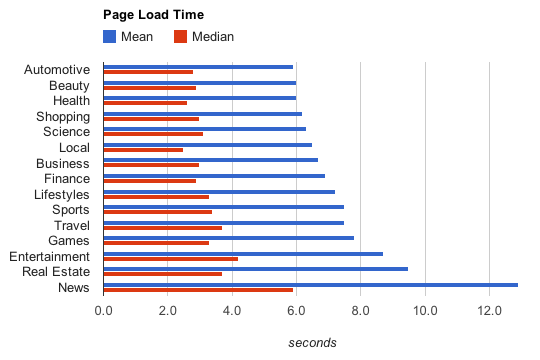
Speed Matters!
Thank You!
References
- Web Performance working group
- Google Analytics Site Speed Help Center
- Other IO sessions
